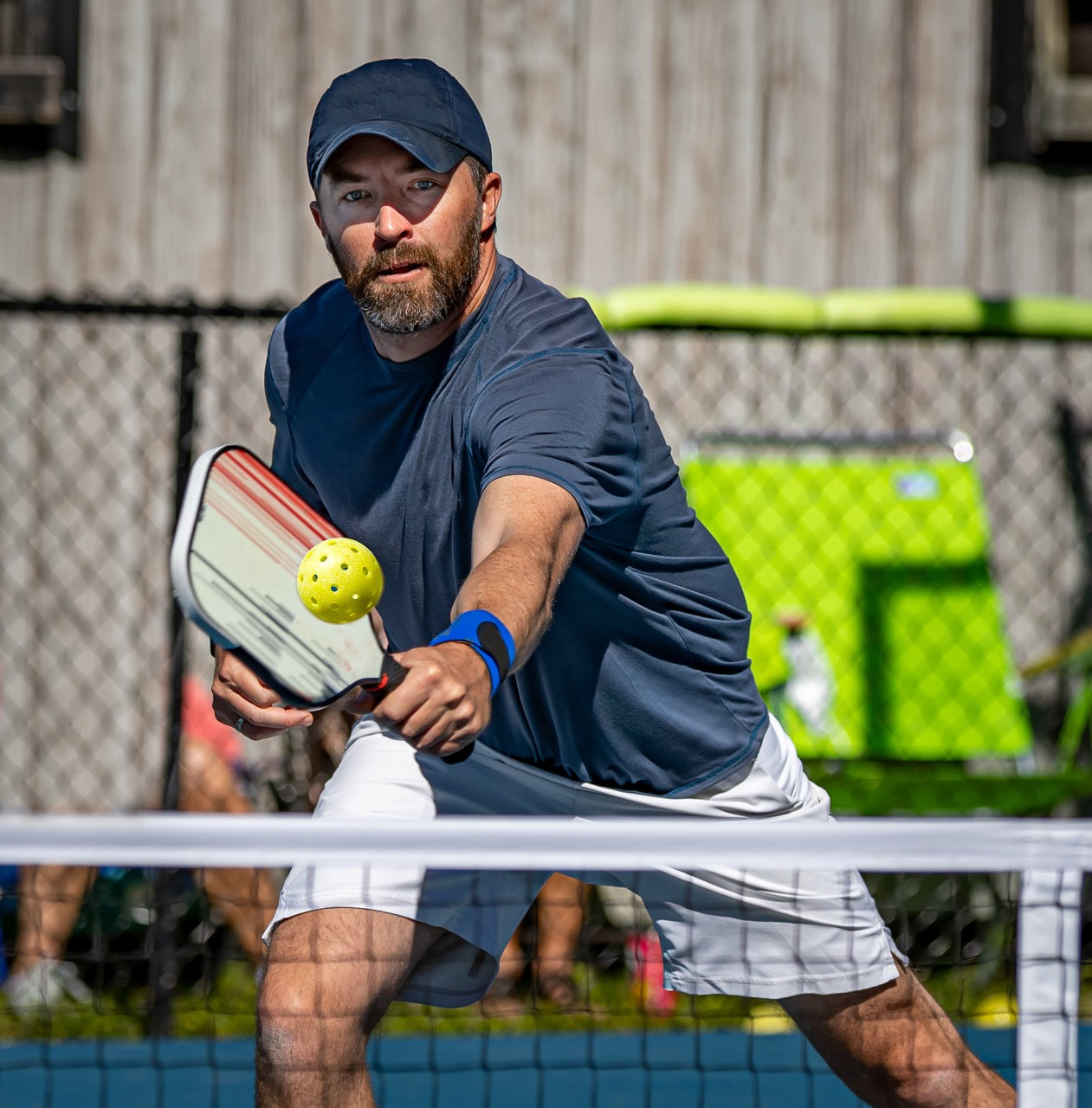Published January 21, 2024
In pickleball, the way you grip your paddle can significantly affect your game, including how you strike the ball and the type of shots you can effectively execute. There are several common ways to hold your paddle by players.
1. Continental:
(Image courtesy of the Professional Pickleball Registry PPR)
- This is also known as the "hammer grip."
- The hand is positioned as if you are holding a hammer, with the base knuckle of your index finger and heel of your hand aligned with the top edge of the paddle.
- This grip is versatile, allowing for effective forehand and backhand shots, serves, and dinks. It's great for beginners, because of its simplicity and adaptability.
2. Eastern Forehand:

(Image courtesy of the Professional Pickleball Registry PPR)
- The base knuckle of your index finger is aligned with the side of the paddle, facing the net.
- This provides more power on forehand strokes and is preferred by players who favor a strong forehand.
3. V-Grip:

(Image courtesy of the Professional Pickleball Registry PPR)
- This is a less common grip than the previously discussed grips. The index finger and thumb create a V-shape on the paddle handle.
- It allows for more wrist action and spin, but it might reduce control and power.
4. Two-Handed Grip:
- It is often used for backhand shots.
- The dominant hand holds the paddle with a Continental or Eastern, and the non-dominant hand is placed above the dominant hand on the handle.
- This grip provides additional stability and power for backhand strokes. It is especially useful for players transitioning from tennis.
5. Western Forehand Grip:
- The hand is rotated further than the Eastern Forehand grip, with the palm more underneath the paddle handle.
- It's less common in pickleball, but it can generate topspin on forehand shots. However, it might be challenging to switch to a backhand shot quickly.
Selecting the right grip is largely a matter of personal comfort and playing style. Most players start with the Continental grip for its ease and versatility and then experiment with other grips as they develop their skills and playing style. It's also not uncommon for players to switch grips during a game based on the shots they are executing.
For more information, strategies and tips on pickleball be sure to check out USA Pickleball, The International Pickleball Federation, and the Pro Pickleball Registry!
~
Looking for more insightful pickleball tips and strategies? Or perhaps the perfect pickleball gift?
Be sure to explore our other blog posts for everything from beginner's guides to advanced techniques. And don't forget to check out our top-rated pickleball gifts, perfect for players of all types, both on and off the court!



